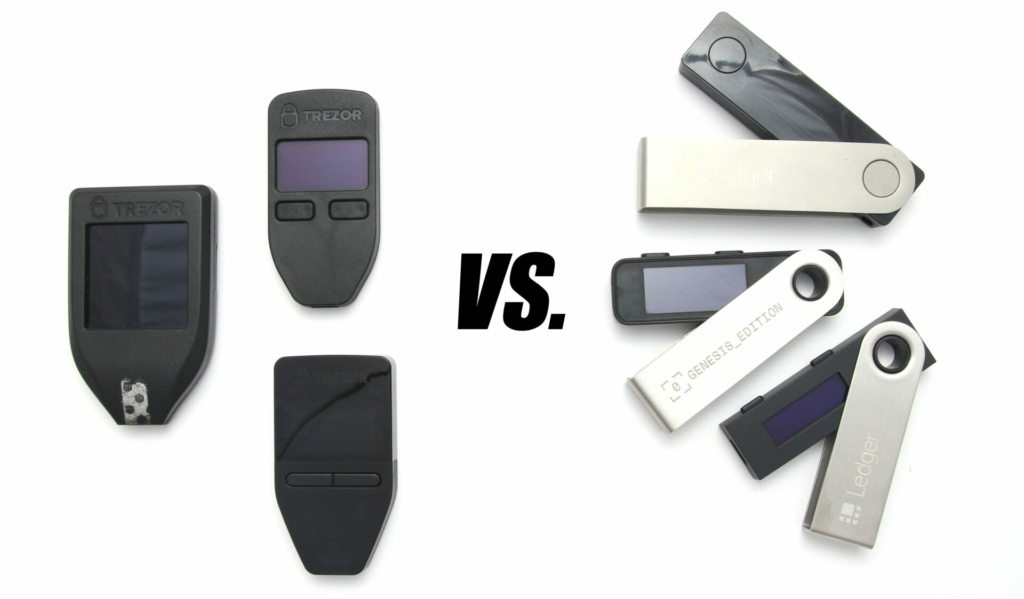Securing your digital assets is more important than ever in 2025 as the crypto ecosystem continues to grow. Hardware wallets provide piece of mind by keeping your private keys offline, especially in light of the increasing number of hacks, scams, and phishing efforts. **Ledger** and **Trezor** are two of the most reliable names in the game. Here is a thorough analysis to help you decide which option is best for your cryptocurrency needs this year.
Security: Open Source vs. Closed
Although they have different ideologies, both wallets provide security, which is an essential component of cryptocurrency.
A **Secure Element (SE)** chip, similar to those found in credit cards, is incorporated into **Ledger** to provide an additional degree of security against physical attacks. However, certain members of the crypto community have criticized Ledger’s firmware since it is **partially closed-source**.
However, **Trezor** is proud to be **open-source** in its entirety. This openness promotes confidence by enabling the community to examine and validate the code. Despite not using a Secure Element chip, Trezor’s software and architecture have been shown to be secure.
**Conclusion:** If you value open-source transparency above all else, go with **Trezor** or **Ledger** for enhanced hardware security.
Interface and Experience for Users
The **touchscreen interface** (Model T) of **Trezor** is frequently commended for simplifying setup and transactions, particularly for novices. The menus and buttons are easy to use and intuitive.
With the **Nano X** and **Nano S Plus**, **Ledger** depends on side buttons and a smaller screen. But even for novices, the **Ledger Live** app makes cryptocurrency management easy. It is a robust desktop and mobile companion that supports DeFi integration, staking, and cryptocurrency purchases.
Bottom Line: Ledger wins for an improved mobile and app experience, while Trezor wins for on-device usability.
Support for Crypto Assets
In addition to millions of ERC-20 tokens, both wallets support popular cryptocurrencies including Bitcoin, Ethereum, and Cardano. In general, however, **Ledger supports more tokens**, including some of the most recent and specialized coins. Better NFT and DeFi integrations are also provided directly through Ledger Live.
Although Trezor supports a large number of assets, it frequently depends on third-party wallets (like as Electrum or MetaMask) to provide access to specific tokens or DeFi platforms.
**In conclusion,** **Ledger** provides NFT and DeFi users with additional asset support and integrated functionalities.
Cost and Models
* **Ledger Nano X**: ~$149, mobile device compatible, Bluetooth enabled.
* **Ledger Nano S Plus**: Most important features at a low price of ~$79.
* **Trezor Model T**: With a touchscreen and microSD compatibility, it costs about $179.
* **Trezor Model One**: Great for users of Ethereum and Bitcoin, this entry-level device costs about $69 dollars.
Bottom Line: Ledger’s entry-level models are marginally more feature-rich for the price, however both brands offer models at different price points.
The final judgment
In 2025, **both Trezor and Ledger are still great options** for safely storing your cryptocurrency. **Ledger is probably your best option** if you want superior hardware security, a well-designed app, and wider asset support. **Trezor won’t let you down** if you appreciate open-source software, transparency, and a more user-friendly on-device interface.
Whether security, ease of use, or asset flexibility are your top requirements, the ideal wallet is the one that meets them. In either case, you’ll be taking a wise and safe step for your future in cryptocurrency.

Leave a Reply